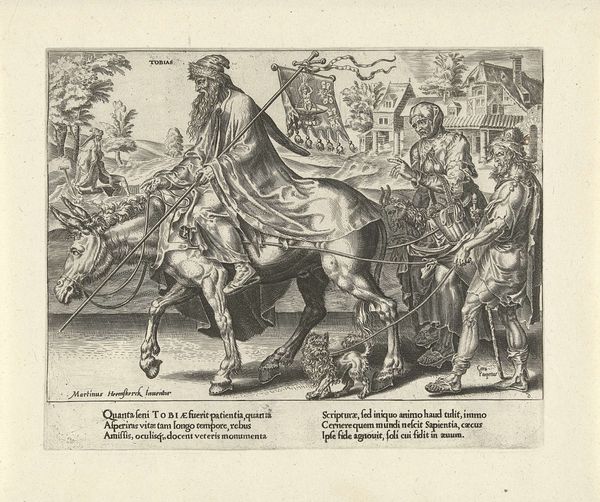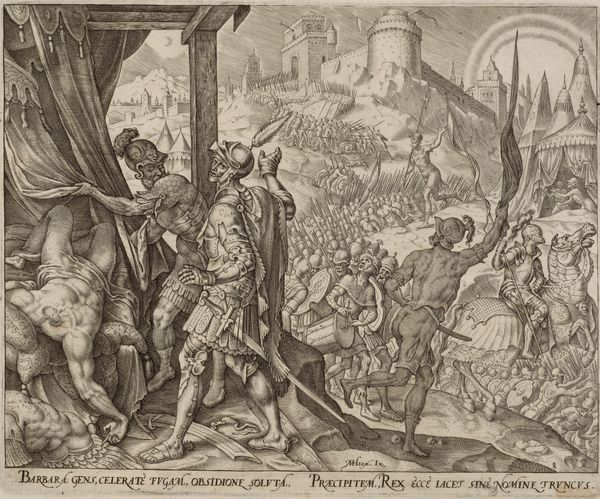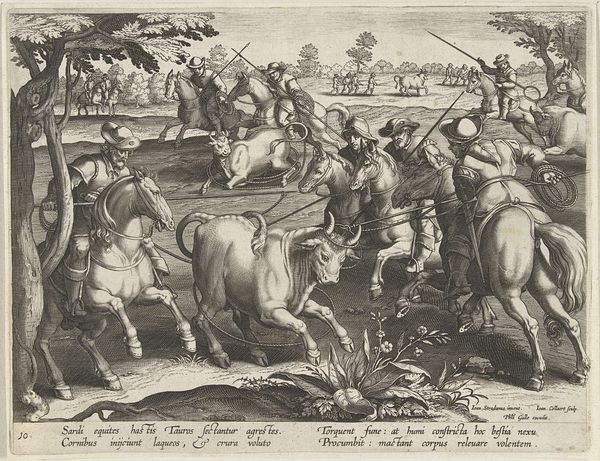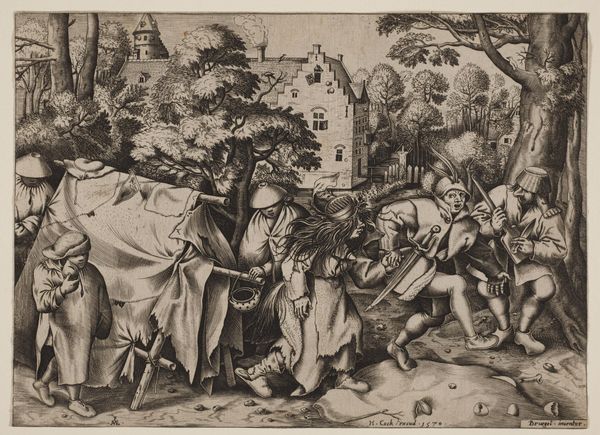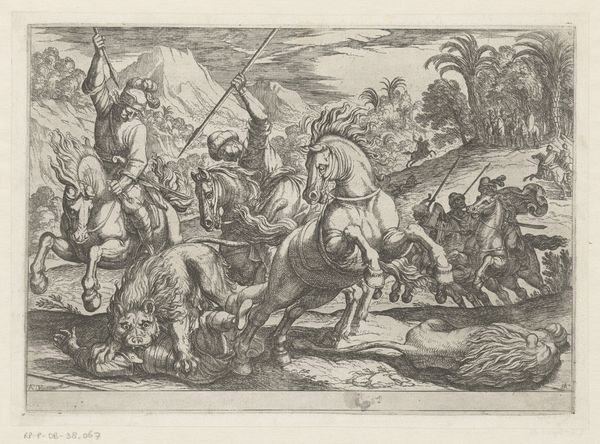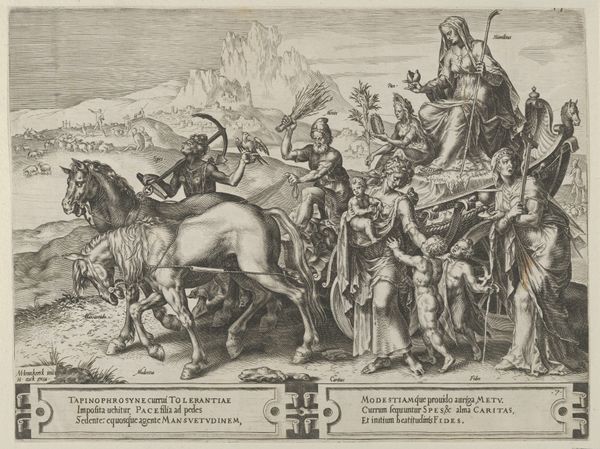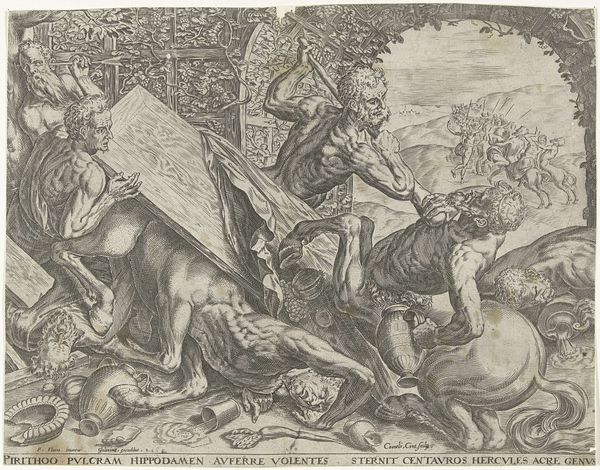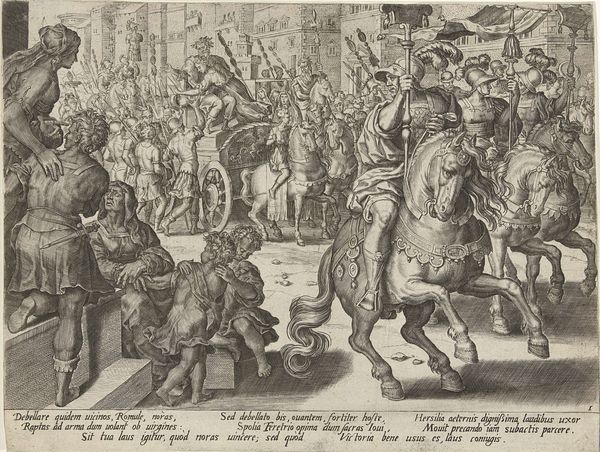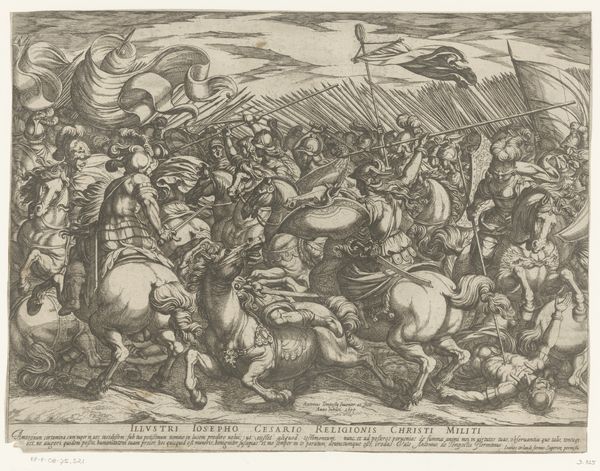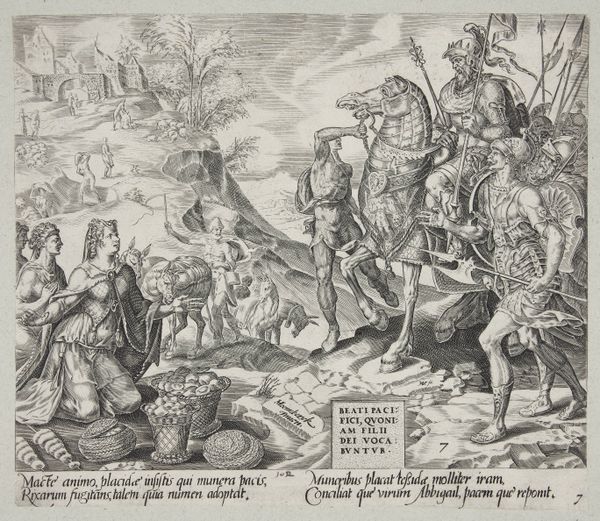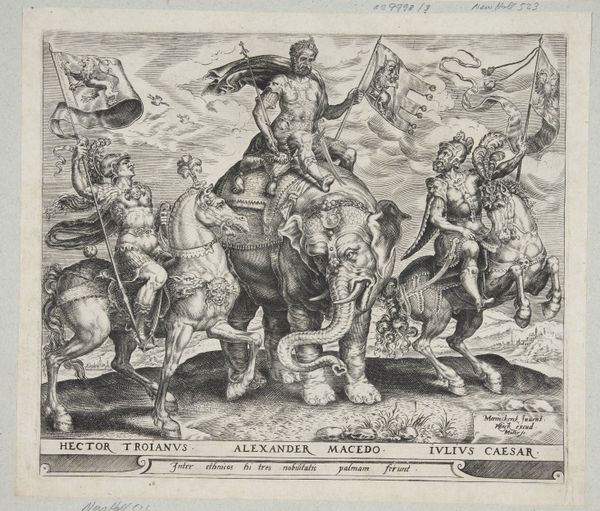
drawing, print, engraving
#
drawing
#
pen drawing
# print
#
pen illustration
#
pen sketch
#
pen work
#
genre-painting
#
northern-renaissance
#
engraving
Dimensions: height 201 mm, width 246 mm
Copyright: Rijks Museum: Open Domain
Curator: This engraving, "Tweede voorwendsel: de nieuwe kudde", tentatively dated between 1558 and 1633, attributed to Dirck Volckertsz Coornhert, presents an intriguing scene. It's held here at the Rijksmuseum. What's your initial impression? Editor: It feels… theatrical. Like a stage from a traveling play. The figures seem posed, almost gesturing for the audience. And what is with the cattle? Curator: Absolutely! It's Northern Renaissance in style, and that dramatic flair is characteristic. The cattle, you see, they're more than just farm animals. They are symbols of a 'new herd'. Think of it metaphorically, as followers. The artwork might be critiquing societal trends and blind faith, in a world where religion was used as a pretense, a cover-up for misbehavior. Editor: So, a commentary on the flock? The title does translate roughly to "Second Pretense: the new herd," doesn’t it? The prominent figures at the front…one’s practically announcing something with those horns. Who are they supposed to represent? Curator: One interpretation sees these characters as allegorical figures or perhaps critiques of religious leaders of the time. The one with the horns may symbolize empty pronouncements or false promises. The sword hanging from his waist hints at earthly power, which doesn't mix with religious spirituality. There's a potent tension. Editor: I also find it striking how the everyday farm life continues almost oblivious in the background, behind the herd; cart-pushing peasants, domestic animals – life as usual. The political always seeps into the private. The city behind gives perspective on how distant or removed those realities were for the powerful who lived in there. Curator: Yes! It’s all masterfully woven together. These contrasting elements make Coornhert’s piece complex. You’re not just seeing a scene, but decoding layers of social and religious critique. Editor: It certainly makes you think about the performative aspects of leadership even today. How carefully constructed the image can be. Curator: Precisely! These images served a public role and can reveal so much about the politics of the time, by questioning faith or authority. Editor: Well, that’s given me a lot to reflect on regarding the continuous loop of image, power, and the social world. Thanks.
Comments
No comments
Be the first to comment and join the conversation on the ultimate creative platform.
